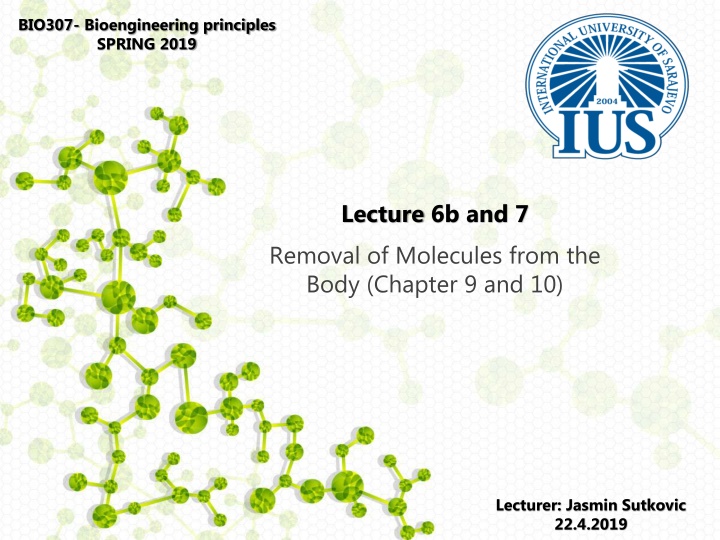Types of Partnerships in Business
A partnership in business involves two or more individuals sharing responsibilities, profits, and losses. Various types of partnerships exist, such as general partnerships, limited partnerships, and limited liability partnerships (LLPs), each with its own distinct characteristics and advantages. General partnerships involve equal sharing of responsibilities, liabilities, and profits among partners. Limited partnerships allow partners to have limited liability, with at least one general partner in charge of daily operations. LLPs provide all partners with limited liability, commonly seen in professional services firms like law practices and medical partnerships.
Uploaded on Mar 20, 2025 | 0 Views
Download Presentation

Please find below an Image/Link to download the presentation.
The content on the website is provided AS IS for your information and personal use only. It may not be sold, licensed, or shared on other websites without obtaining consent from the author.If you encounter any issues during the download, it is possible that the publisher has removed the file from their server.
You are allowed to download the files provided on this website for personal or commercial use, subject to the condition that they are used lawfully. All files are the property of their respective owners.
The content on the website is provided AS IS for your information and personal use only. It may not be sold, licensed, or shared on other websites without obtaining consent from the author.
E N D
Presentation Transcript
BIO307- Bioengineering principles SPRING 2019 Lecture 6b and 7 Removal of Molecules from the Body (Chapter 9 and 10) Lecturer: Jasmin Sutkovic 22.4.2019
Content Chapter 9: Examples of elimination of molecules from the body Biotransformation and biliary excretions Kidneys role in eliminations of molecules Book chapter 8 and 9 (page 329-353) E:\cloud\drive\websites\ppttemplate\ppt\logo-ppttemplate.png
Introduction Through food and respiration we intake enormous molecules into our body. Body processes such as building proteins, producing energy, and replenishing lost nutritional stores use many of these molecules. But a sizeable number of ingested chemicals are either not usable or not needed by the body, and therefore must be eliminated.
Examples of elimination of molecules from the body The human body has a variety of mechanisms for elimination of waste products For exp: CO2 is removed by the exhalation from our lungs Other molecules are often converted to other molecular forms , usually done in liver, though a process called Biotransformation, as for example alcohol. Kidney keeps the homeostasis of water, cleaning up the blood from toxic molecules
Caffeine, the active ingredient in coffee and many soft drinks, has a half-life of 5 7 hours. The average rate of metabolism of ethanol in adults is approximately 120 mg/kg/h, or about 30 mL in 3 hours for a 75-kg adult Whereas metabolism in the liver decreases the concentration of ethanol and therefore ends drunkenness but it increases the concentration of acetaldehyde, which is toxic.- with long time leading to liver failure!
Examples Time required for the concentration of a drug to fall to half of its initial concentration after reaching its peak. For example, after intravenous administration, if maximum concentration is 16 mg and the half life is 2 hours, after 2 hours 8 mg will be left, and so on. When the drug is absorbed and reaches the plasma, it is distributed to the tissues. Some drugs have high volume of distribution and are distributed to various tissues, mostly adipose tissue. More time is required for their elimination, thus have greater half life. More the clearance of a drug, shorter is the half life.
When drug companies develop a new potential drug, one of the most important questions that they must answer is: How does the body get rid of it? Aspirin Another name for the compound acetyl salicylate. If the half-life of aspirin is 15 minutes, how can the biological effects of aspirin last for several hours?
ANSWER: The biological effect will last as long as the concentration of the agent is above its therapeutic concentration (i.e., the concentration in the blood that is necessary a biological effect). Due to larger dose the effects last longer and because the half life of aspirine metabolites is much longer, having the same effects.
Biliary excretions The liver directly excretes some compounds!! These compounds are transported by hepatocytes from the blood into the liver biliary system, a branching network of vessels and reservoirs that collects bile (yellow brown fluid that digest the lipids) and empties it into the small intestine. In humans, the liver produces 250 1,000 mL of bile per day, which is transported through the biliary vessels, stored and concentrated in the gall bladder, and delivered into the small intenstine,
BIO307- Bioengineering principles Spring 2019 Lecture 7 BIOMECHANICS (Chapter 10) Lecturer: Jasmin Sutkovic 29.4.2019
Introduction Humans can hold their bodies erect, vertically above the earth, because their bodies are solid objects capable of supporting their own weight! Humans are also capable of movement. Muscles connected to the solid bone framework contract to generate forces that result in motion.
Mechanical properties of materials Biological materials, such as bones and muscles and the cells that comprise them, mechanical objects and, therefore, are subject to forces that occur because of the world around them. Physical forces are present throughout the body. Some forces are large: The head of the femur regularly experiences forces that are 2 3 times the weight of the whole body or 1,800 2,700 N (for a 90kg man). Much smaller forces have biological effects: Muscles typically generate forces of 1N.
When a material is subjected to a force, it responds in some way. One type of response is motion: A stationary billiard ball that is struck by a moving billiard ball will roll. During the motion (force impact) the material may DEFORM. Biological materials are constantly exposed to forces. When a person stands, his or her mass acting under the acceleration of gravity produces forces on the bones, muscles, and other structures of the legs.
The material will change, or deform, in response to the load. The load on the material is defined in terms of the stress, or force per cross-sectional area, that is applied: Stress, , is equal to the force divided by the area A. The response of the material to this load is measured as strain, . The strain is equal to the fractional increase in length of the material, delta L/L.
This relationship is called Hookes law, after the British physicist Robert Hooke; this equation describes the behavior of many elastic materials, such as springs, which deform linearly upon loading and recover their original shape upon removal of the load. Young s modulus or tensile elastic modulus, E, is a property of the material. Not all elastic materials obey Hooke s law (e.g., rubber does not); some materials will recover their original shape, even though strain is not linearly related to stress.
Mechanical properties of tissues and organs The musculoskeletal system consists of: Bones, which connect into a skeleton that forms the overall shape of the human body Muscles Ligaments Tendons, Cartilage that enable its movement.
Bone structure and function Bone is a hard, strong, dense tissue, which is composed of a mineral phase (60%), an organic collagen-rich matrix (30%), and water (10%). Because bone is a composite material, composed of both a soft protein matrix and a hard mineral phase, it has some elasticity and it is also strong
Cellular mechanics Cells are complex, deformable objects Their internal structure allows them to deform Red blood cells, slightly larger than the smallest capillaries, and therefore, must deform to move through the circulation White cells are substantially larger and less deformable than red cells; therefore, they can have a larger impact on blood flow properties
Mechanical properties of cells The mechanical properties of many cells including blood cells have been directly measured by aspiration into a micropipette! Video: https://www.youtube.com/watch?v=A- Qg-Ty7ROo























